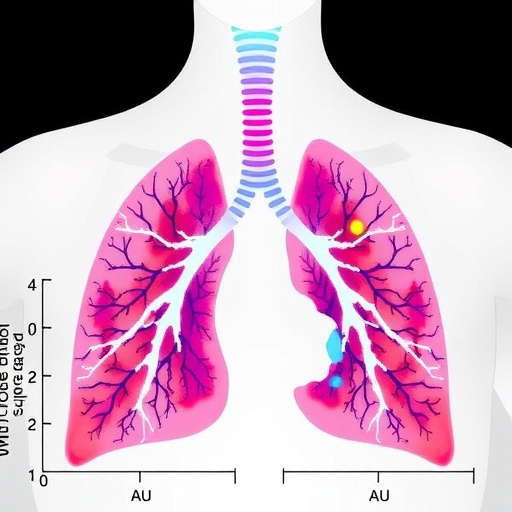In the dynamic world of cellular biology, the ability of a single cell to make autonomous decisions regarding its growth, specialization, or death is nothing short of extraordinary. Far beyond simple biochemical reactions, cells engage in a complex decision-making process that integrates signals from both their external environment and internal states. Recent pioneering research from ETH Zurich, conducted under the leadership of Professor Yves Barral, has unveiled groundbreaking insights into the molecular mechanisms by which yeast cells use intricate networks of biomolecular condensates to govern these critical cellular fate choices. Published in the prestigious journal Molecular Cell, these findings open new vistas for understanding cellular aging and function at a molecular level.
One of the fundamental mysteries in cell biology has been how cells consolidate dispersed molecular information scattered throughout their interior to yield coherent, context-dependent decisions. The discovery centers on specialized compartments known as biomolecular condensates, which aggregate proteins and RNA without being encased by lipid membranes. These condensates exist in states ranging from liquid-like to gel-like or even more solid structures, facilitating diverse biochemical processes by creating concentrated microenvironments. In yeast cells, Professor Barral’s team identified two primary condensates—P-bodies and Whi3 condensates—that spatially and functionally collaborate to regulate cellular aging and reproductive behavior.
To dissect the role of these condensates, the researchers applied state-of-the-art microfluidic techniques to trap individual yeast cells under the microscope, enabling continuous, high-resolution observation of cellular behavior through multiple generations. As the cells aged, it became evident that the formation and interaction of P-bodies and Whi3 condensates intensified. These structures selectively bound messenger RNA (mRNA) molecules responsible for coding key proteins of the cell division cycle, effectively repressing their translation and thereby inducing cellular quiescence.
Crucially, the interplay between P-bodies and Whi3 condensates is not merely additive but synergistic. Disrupting either of these condensates pharmacologically or genetically prevented the typical cessation of cell division associated with aging. This strongly suggests that the condensates function as a coordinated molecular circuit that senses intracellular cues such as metabolic status or accumulated damage, facilitating controlled cell cycle exit. Artificial induction of Whi3 condensates led to premature onset of cellular aging phenotypes, affirming their active role in determining cell lifespan.
Intriguingly, these condensate networks do not solely govern the decision to stop dividing; they also play a decisive role in the reproductive behavior of yeast. Traditionally, it was assumed that aged yeast cells lose responsiveness to mating pheromones, rendering them sterile. However, the ETH Zurich team revealed that older cells retain the ability to detect pheromone signals but quickly abandon their mating attempt. This rapid retreat from mating in aged cells is mediated by the same condensate machinery, underscoring a vital mechanism by which cells weigh internal aging against external mating opportunities.
This dual regulatory function exemplifies the condensates’ role as molecular arbiters, integrating diverse signals to tailor cellular responses optimally. By organizing proteins and RNA into dynamic assemblies, these condensates act analogously to committees or decision-making bodies within the cell, synthesizing biochemical data into concrete behavioral outcomes. Such modular control systems may be a universal feature conserved across species and cell types, illuminating fundamental principles of biological information processing.
Beyond their basic biological importance, these discoveries carry profound implications for our understanding of pathological conditions such as cancer, infection persistence, and age-related tissue degeneration. For example, tumor cells’ abnormally relentless division or bacterial entry into dormancy under antibiotic stress can be conceptualized as disruptions or hijackings of condensate-mediated decision pathways. Likewise, the gradual decline in regenerative capacity of aged human stem cells might be governed by analogous molecular condensate networks.
Despite this promise, translating these foundational insights into therapeutic interventions remains a formidable challenge. Condensates form through weak, multivalent interactions among biomolecules, features that complicate the design of specific drugs capable of selectively modulating their assembly or disassembly. Future research will need to unravel the precise molecular grammar governing condensate dynamics and identify small molecules or biologics that can intervene without unintended consequences on other critical cellular processes.
Nevertheless, the work by Barral and colleagues represents a monumental leap forward, demonstrating that intracellular condensates are not passive aggregations but active participants in cellular decision-making. This paradigm reframes how scientists conceptualize intracellular organization, highlighting a sophisticated level of self-regulation that balances cellular proliferation, differentiation, and survival in response to ever-changing internal and external landscapes.
As life begins at the cellular scale, understanding the nexus of molecular interactions that direct cell fate promises to unlock new strategies for combating diseases while enhancing healthy aging. The concept of targeting molecular condensates to manipulate cellular decisions is an exciting frontier, offering hope for interventions that can recalibrate dysfunctional cells back to homeostasis. ETH Zurich’s research not only illuminates the elegant complexity of yeast but also sets the stage for transformative advances in biomedicine.
In summary, the identification of a functional network formed by P-body and Whi3 condensates in yeast underscores a critical dimension of cellular intelligence. Through the mutual regulation of RNA metabolism and protein synthesis, these condensates act as molecular hubs that sense and respond to the cell’s age and mating context, orchestrating the precise timing of cell cycle arrest and mating avoidance. This biomolecular symphony exemplifies nature’s ingenuity in steering life’s fundamental choices via dynamic, membrane-free compartments, heralding a new era of cell biology where phase-separated condensates are recognized as vital computational entities within living systems.
Subject of Research:
Cellular decision-making mediated by biomolecular condensates in yeast, focusing on aging and mating regulation.
Article Title:
A network of P-body and Whi3 condensates adjusts cell fate decisions to cellular context
News Publication Date:
2-Oct-2025
Web References:
http://dx.doi.org/10.1016/j.molcel.2025.09.001
Keywords:
Biomolecular condensates, P-bodies, Whi3, yeast cell aging, cell cycle regulation, RNA metabolism, cellular decision-making, phase separation, molecular aggregates, cell mating behavior
Tags: autonomous cell growth and deathbiochemical processes in cellular biologybiomolecular condensates and cellular agingcontext-dependent cellular decision-makingETH Zurich research on cell biologyimpact of protein aggregation on cell functioninsights into molecular biology of yeast cellsmolecular mechanisms of cell specializationP-bodies and Whi3 condensates interactionprotein condensates in cell fate decisionsunderstanding cellular microenvironmentsyeast cell decision-making processes





